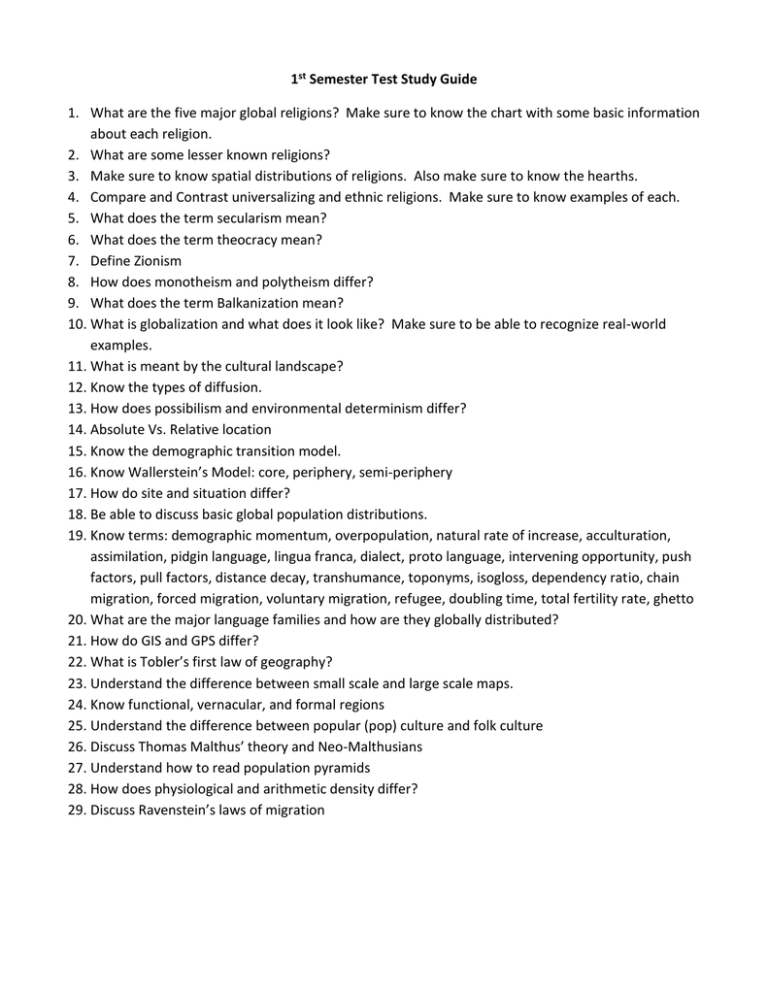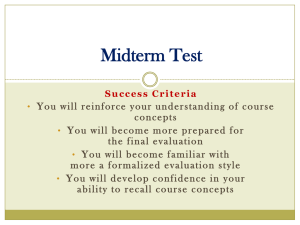Document 17595899
advertisement

1st Semester Test Study Guide 1. What are the five major global religions? Make sure to know the chart with some basic information about each religion. 2. What are some lesser known religions? 3. Make sure to know spatial distributions of religions. Also make sure to know the hearths. 4. Compare and Contrast universalizing and ethnic religions. Make sure to know examples of each. 5. What does the term secularism mean? 6. What does the term theocracy mean? 7. Define Zionism 8. How does monotheism and polytheism differ? 9. What does the term Balkanization mean? 10. What is globalization and what does it look like? Make sure to be able to recognize real-world examples. 11. What is meant by the cultural landscape? 12. Know the types of diffusion. 13. How does possibilism and environmental determinism differ? 14. Absolute Vs. Relative location 15. Know the demographic transition model. 16. Know Wallerstein’s Model: core, periphery, semi-periphery 17. How do site and situation differ? 18. Be able to discuss basic global population distributions. 19. Know terms: demographic momentum, overpopulation, natural rate of increase, acculturation, assimilation, pidgin language, lingua franca, dialect, proto language, intervening opportunity, push factors, pull factors, distance decay, transhumance, toponyms, isogloss, dependency ratio, chain migration, forced migration, voluntary migration, refugee, doubling time, total fertility rate, ghetto 20. What are the major language families and how are they globally distributed? 21. How do GIS and GPS differ? 22. What is Tobler’s first law of geography? 23. Understand the difference between small scale and large scale maps. 24. Know functional, vernacular, and formal regions 25. Understand the difference between popular (pop) culture and folk culture 26. Discuss Thomas Malthus’ theory and Neo-Malthusians 27. Understand how to read population pyramids 28. How does physiological and arithmetic density differ? 29. Discuss Ravenstein’s laws of migration

